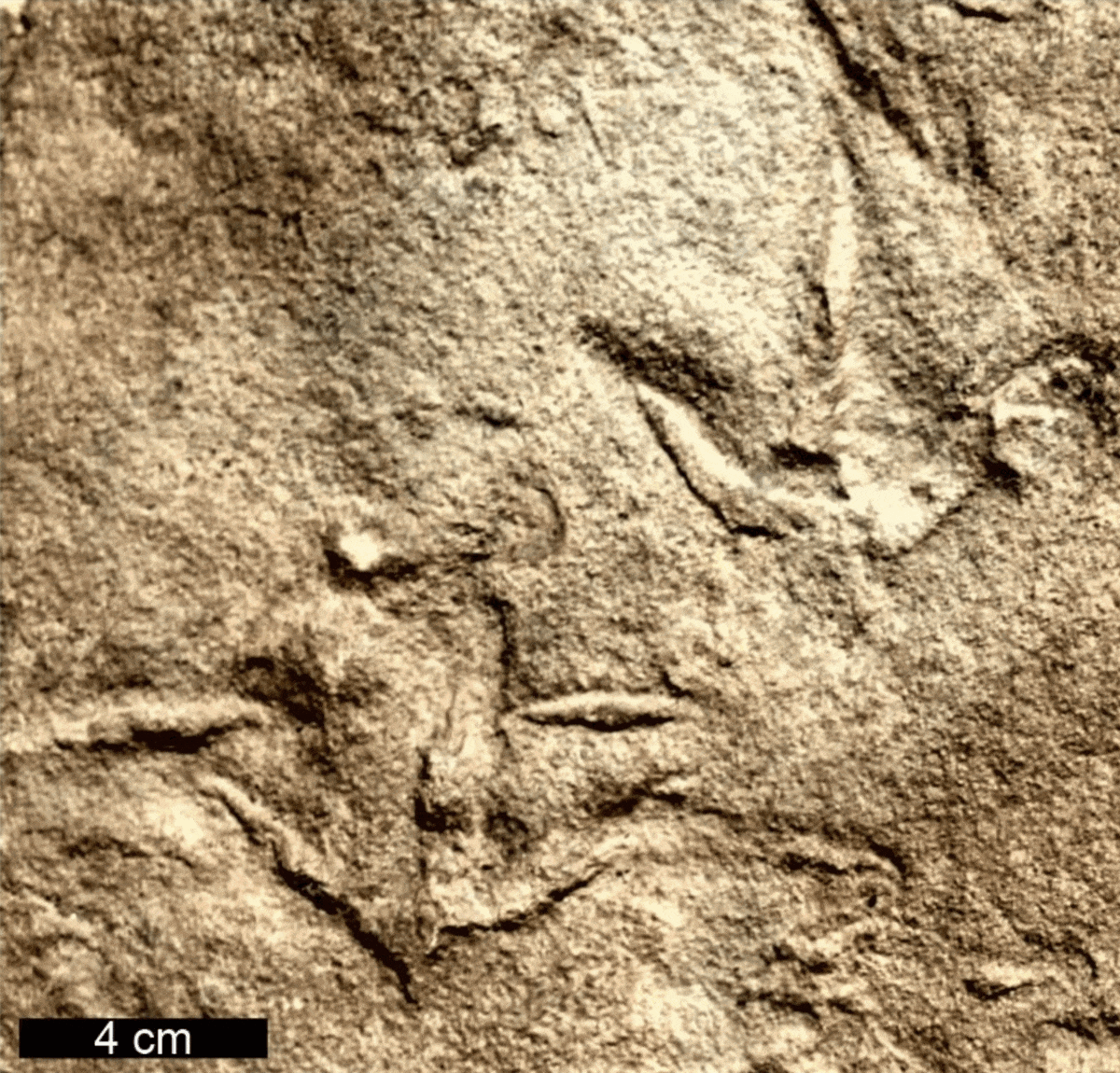Paleontology
The Ten Most Significant Science Stories of 2023
From an asteroid sample that was delivered to Earth to a discovery about human migration from North America, these were the biggest moments of the year
Fossil Hunters Uncover Prehistoric 'Sea Monster' Skull at a U.K. Beach
The six-and-a-half-foot-long pliosaur skull was excavated from a rock cliff in England and may belong to a new species, scientists say
The Top Ten Dinosaur Discoveries of 2023
From uncovering a tyrannosaur’s last meal to unlocking the secrets of a dino with a really long neck, these were the year’s biggest stories
Once Thought to Be Plants, These Rare Fossils Are Actually Baby Turtles, Scientists Say
The prehistoric specimens found in Colombia could represent one of the oldest and largest turtle species to ever exist
Amazing Fossil Preserves Teenage Tyrannosaur’s Last Meal
Stomach contents from a juvenile Gorgosaurus reveal it feasted on small, bird-like species 75 million years ago
Male Mosquitoes May Have Once Sucked Blood, Amber Fossils Suggest
Today, only female mosquitoes feed on the blood of animals, while males are satisfied with plant juices
Mysterious Creatures With Bird-Like Feet Made These Tracks Long Before Birds Evolved
The footprints pre-date the earliest known fossils of avian ancestors by roughly 60 million years, per a new study
Australia's Oldest Known Bird Tracks Are 120 Million Years Old
In that age, the continent was attached to Antarctica, but migrating animals still traveled to the polar region for sustenance
Ancient Whales Were the Biggest and Smallest of Their Kind to Ever Roam the Oceans
New discoveries show how whale diversity exploded after the dinosaurs disappeared
These Large, Flesh-Eating Lampreys Lived 160 Million Years Ago
Paleontologists in China recently unearthed the fossilized remains of two new species of lamprey, a group of jawless fish that dates back 360 million years
Dust May Have Triggered the Global Winter That Killed the Dinosaurs
A new study, based on modeling, suggests fine silicate particles could have blocked sunlight and shut down photosynthesis across the globe
Neanderthals May Have Hunted Cave Lions
Researchers say well-preserved bones may be the earliest direct evidence of the hunting of large predators
During the Age of Dinosaurs, Some Birds Sported Toothy Grins
The often overlooked animals thrived for millions of years
New 'Giant' Species of Long-Necked Dinosaur Discovered in Spain
The prehistoric creature, named Garumbatitan morellensis, may help paleontologists unravel the evolution of the plant-eating sauropods
How Pterosaurs Might Inform the Next Generation of Flight
After paleontologists cracked the secrets of the ancient flying reptiles, researchers are thinking about how to harness their methods
This 'Weird,' Bird-Like Dinosaur Had Really Long Legs
Paleontologists discovered the 150-million-year-old creature in southeast China
Drought Reveals 113-Million-Year-Old Dinosaur Tracks in Texas
The footprints are normally submerged under the water and silt of the Paluxy River, part of which has dried up this summer
Teenager Helps Uncover 34-Million-Year-Old Whale Skull in Alabama
Working with one of her teachers, the 16-year-old student found the fossil, which may represent a new species, on her family’s property
Paleontologists Discover Mummified Bees Preserved in Their Cocoons for 3,000 Years
Some kind of "catastrophic" event, such as a sudden freeze or flood, likely killed all the young adult bees at once, according to a new study
How a Victorian Dinosaur Park Became a Time Capsule of Early Paleontology
A new sculpture and an upcoming restoration are breathing life into the Crystal Palace Dinosaurs, one of 19th-century Britain’s most curious creations
Page 3 of 31
:focal(800x602:801x603)/https://tf-cmsv2-smithsonianmag-media.s3.amazonaws.com/filer_public/bc/1a/bc1a8ce0-a261-43a8-b66a-0a2dfed17308/topsciencestories2023-v3_web.jpg)
:focal(1011x674:1012x675)/https://tf-cmsv2-smithsonianmag-media.s3.amazonaws.com/filer_public/ab/26/ab26ff66-bbe3-4841-b014-02e1ae4ad621/00xp-pliosaur1-superjumbo.webp)
:focal(800x602:801x603)/https://tf-cmsv2-smithsonianmag-media.s3.amazonaws.com/filer_public/8b/0e/8b0ef95c-1c54-4edf-a049-1729608d5f2c/topdinos2023-v2.jpg)
:focal(502x325:503x326)/https://tf-cmsv2-smithsonianmag-media.s3.amazonaws.com/filer_public/84/a3/84a34abe-ef48-4370-82bc-d6752b1342ce/ezgif-1-73be12d57b.png)
:focal(709x533:710x534)/https://tf-cmsv2-smithsonianmag-media.s3.amazonaws.com/filer_public/c3/42/c342a24b-02a4-47b5-be7d-0b14dfc10ab8/16-gorgosaurus-consumption-artist-julius-csotonyi-copyright-royal-tyrrell-museum-of-palaeontology_web.jpg)
:focal(2750x1781:2751x1782)/https://tf-cmsv2-smithsonianmag-media.s3.amazonaws.com/filer_public/4b/2b/4b2b929b-94dc-45f7-add4-c6373db676f8/gettyimages-540806304.jpg)

:focal(754x567:755x568)/https://tf-cmsv2-smithsonianmag-media.s3.amazonaws.com/filer_public/b3/f0/b3f07d9c-0644-48a2-8c37-c1f24a2ddb9c/ff-1-3_web.jpg)
:focal(800x602:801x603)/https://tf-cmsv2-smithsonianmag-media.s3.amazonaws.com/filer_public/10/a7/10a703a6-4837-4662-8ca6-9c6f70d91f03/gettyimages-89172621_web.jpg)
:focal(1280x719:1281x720)/https://tf-cmsv2-smithsonianmag-media.s3.amazonaws.com/filer_public/4d/bc/4dbcf28c-1a83-4a52-9974-af75be680f0d/2.jpeg)
:focal(1095x688:1096x689)/https://tf-cmsv2-smithsonianmag-media.s3.amazonaws.com/filer_public/f3/90/f39056b5-7c45-426c-a79c-5ab95976b673/gettyimages-1683351339.jpg)
:focal(682x513:683x514)/https://tf-cmsv2-smithsonianmag-media.s3.amazonaws.com/filer_public/bb/f7/bbf7901c-64e2-4bce-822b-3dff225631b0/23-10-12_pm_cavelion_fig2_minkus_nldk_web.jpg)
:focal(800x602:801x603)/https://tf-cmsv2-smithsonianmag-media.s3.amazonaws.com/filer_public/94/c3/94c3279b-63cd-4776-bc4e-b0c2c65bd26c/hesperornis_web.jpg)
:focal(1304x981:1305x982)/https://tf-cmsv2-smithsonianmag-media.s3.amazonaws.com/filer_public/3e/8d/3e8d0b6a-51e1-4c3b-b63f-c374fcaa8eb4/garumbatitan_fig1a.jpg)
:focal(800x602:801x603)/https://tf-cmsv2-smithsonianmag-media.s3.amazonaws.com/filer_public/e9/65/e96535cc-7df2-4e24-81ef-829aae5d657a/gettyimages-89164154_web.jpg)
:focal(1494x1738:1495x1739)/https://tf-cmsv2-smithsonianmag-media.s3.amazonaws.com/filer_public/1e/2f/1e2fb8c8-f992-4f97-a4dd-95896e12d7f2/fujianvenator_prodigiosus.jpeg)
:focal(1024x770:1025x771)/https://tf-cmsv2-smithsonianmag-media.s3.amazonaws.com/filer_public/8d/33/8d334c2d-5d5b-4fb8-90c5-bf68fb0b1eda/370569073_271470382305293_4053533448377484979_n.jpg)
:focal(2000x1505:2001x1506)/https://tf-cmsv2-smithsonianmag-media.s3.amazonaws.com/filer_public/42/e0/42e04c27-e149-4c85-9b86-a0c82a50cf77/lindsey_in_the_research_space_3.jpg)
:focal(1440x878:1441x879)/https://tf-cmsv2-smithsonianmag-media.s3.amazonaws.com/filer_public/62/53/62535505-f275-4795-bdc8-5ba3af404860/bees-from-the-time-of-3.jpg)
:focal(512x346:513x347)/https://tf-cmsv2-smithsonianmag-media.s3.amazonaws.com/filer_public/31/56/3156b309-f34e-4633-a465-73432a18df99/gettyimages-1250745691.jpg)